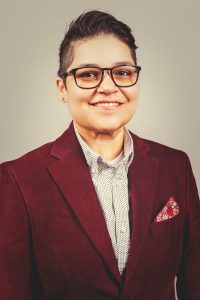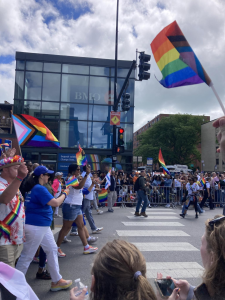Representation of bigger bodies in Hollywood is here but is it too late for us?
April 16, 2019
Growing up in the 2000s as a thick girl was tough. Low cut jeans, midriffs and tiny two-piece swimsuits were in. Being thick was not. I grew up watching tall, thin, fair skinned white women on TV. There wasn’t any other representation other than the aforementioned. If there was, it wasn’t for teenagers. I recently began re-watching “America’s Next Top Model” on Hulu. It shocked me to see Janice Dickinson scream at thin framed and average sized women on the show for being “too fat.”
I’m happy the body positivity movement is here but it came too late for me. I spent years hating myself and my body. My pre-teen and teenage years were spent counting calories for fad diets, scrounging together babysitting money for diet pills and damaging my body with an eating disorder.
Eating Disorder Hope statistics reported that 50% of female teenagers and 30% of male teenagers will skip meals, fast, smoke cigarettes, purge and take diet pills or laxatives to control their weight. The same report also states that 10 million female adults and one million male adults suffer from eating disorders in the United States and four out of 10 people will either have experienced an eating disorder or know someone who did.
However, 2019 is different than the early 2000s. I went to therapy, love myself now and being thick is no longer the end of the world. It’s a great time to be a “thick chick,” but that doesn’t mean mass media isn’t still affecting us and distorting our thoughts on how someone should look like and present themselves.
National Eating Disorders Associations (NEDA) reported that gay and bisexual men, specifically black and latinx men, are more likely to have eating disorders than their heterosexual counterparts. The Emily Program reported that transgender youth are four times more likely to have an eating disorder.
TV shows such as “Shrill,” “The Mindy Project,” “Orange is the New Black,” “Empire” and “This is Us” with plus-sized and thick women living their lives are the shows I needed growing up. I needed to see people on TV who looked like me. Sure, there were women of average size, but they were dieting and exercising to lose the weight.
Take “Shrill,” for example, the main character, Annie, is a plus-sized woman looking to spruce up her life and jump-start her career. She’s faced with many obstacles such as her boss being blatantly discriminatory because of her size, people comparing her to pigs and even an exercise fanatic hounding her to lose weight. But she pushes through and continues to love herself for who she is.
While the women in Orange is the New Black” are incarcerated, actresses Uzo Aduba (Suzanne), Danielle Brooks (Taystee), Dascha Polanco (Daya) and Adrienne C. Moore (Cindy), are all full-figured women whose characters aren’t obsessed with losing weight. Even in their personal lives and on their social media pages, they’re all vocal about loving their bodies as they are. Sure, they work out and eat healthy, as most people should, but they’re not obsessed with being supermodel thin.
There’s nothing wrong with being skinny nor is there anything wrong with being bigger or even in-between. But when bigger people are conditioned their whole lives to equate fatness with ugliness, that’s a problem.
The damage of pushing the supermodel skinny agenda has been done, but with TV shows and movies casting plus-sized people, there’s hope for a positive change with the future generation of young people and their relationship with body image.





